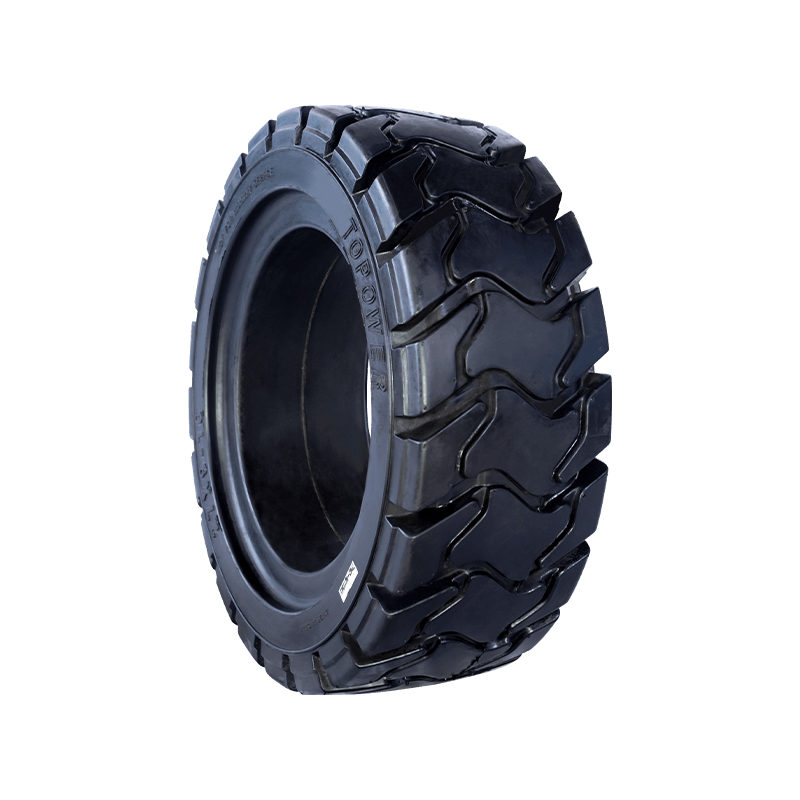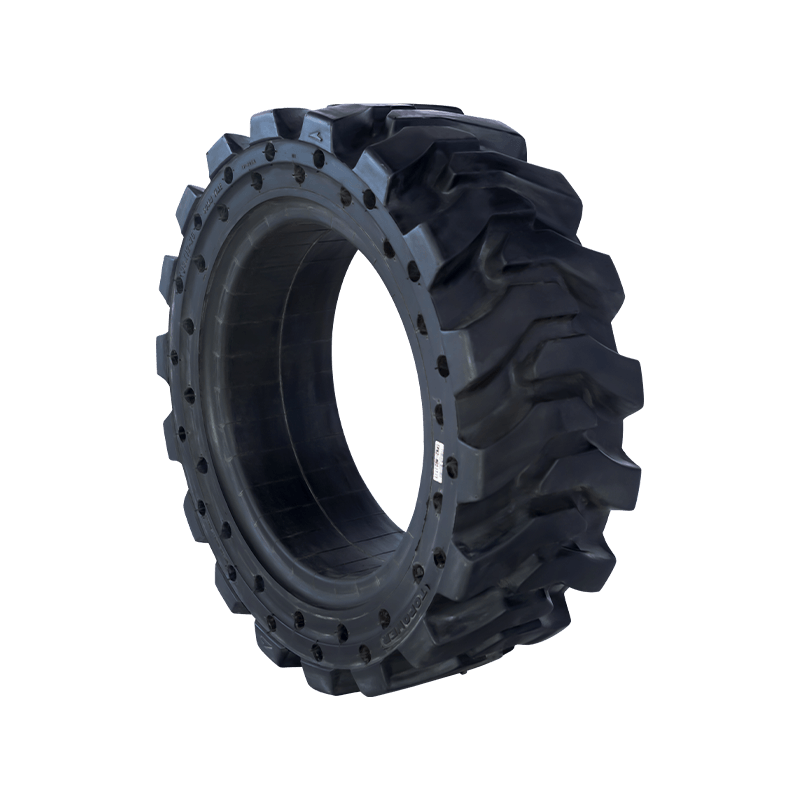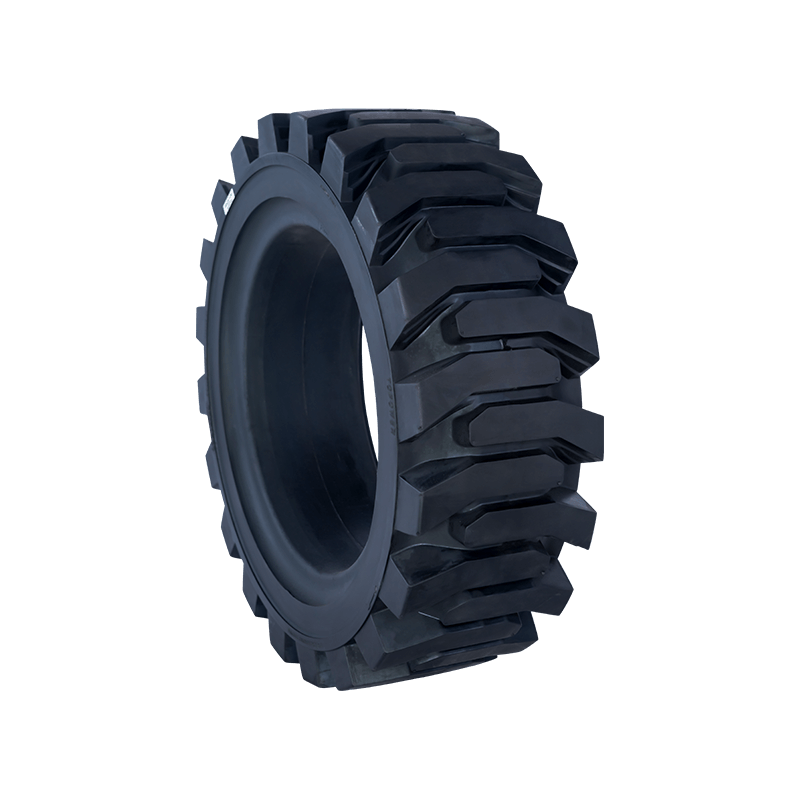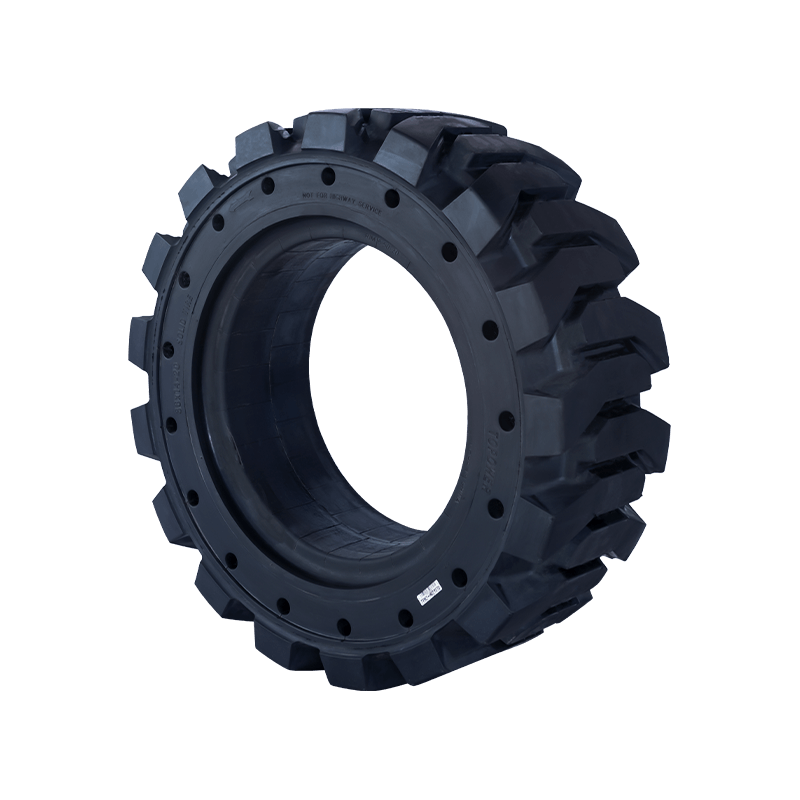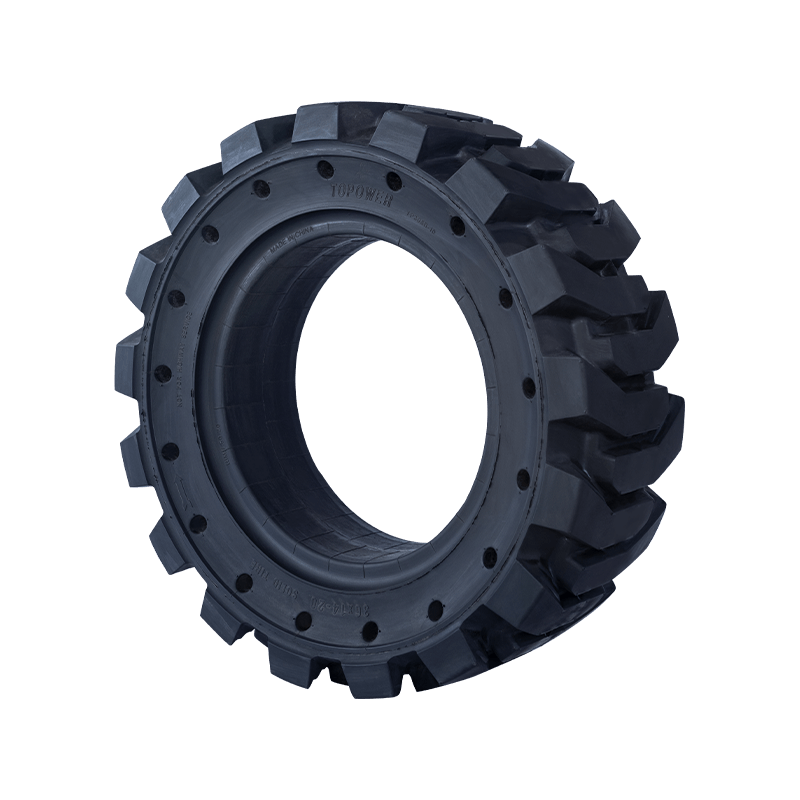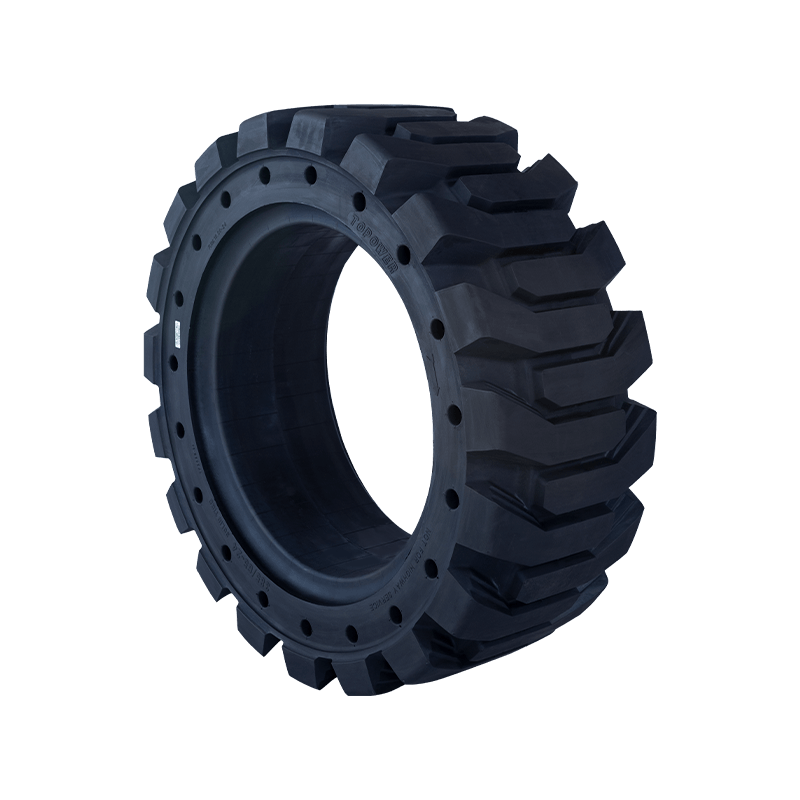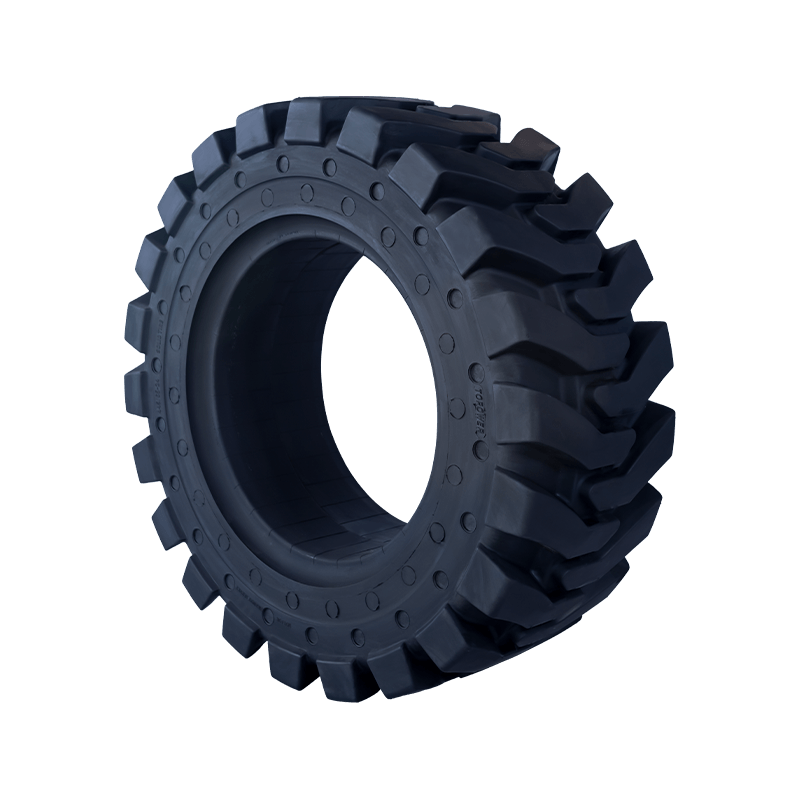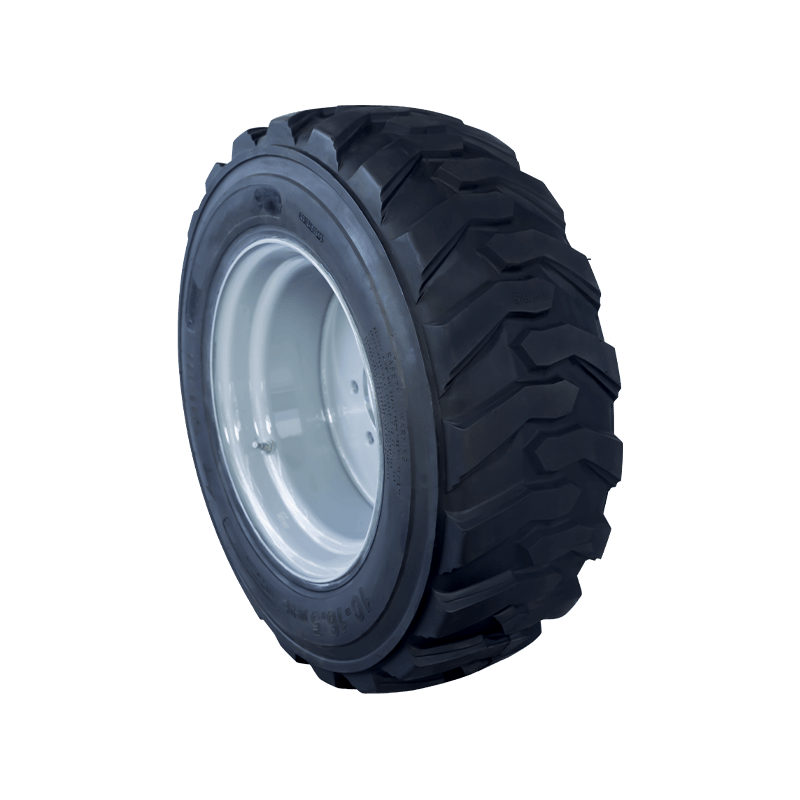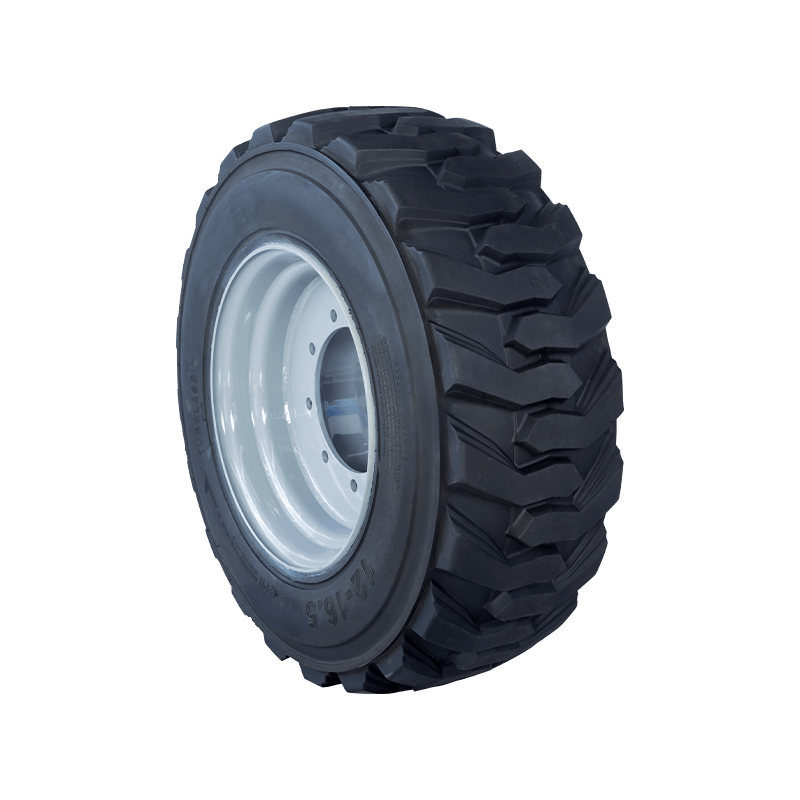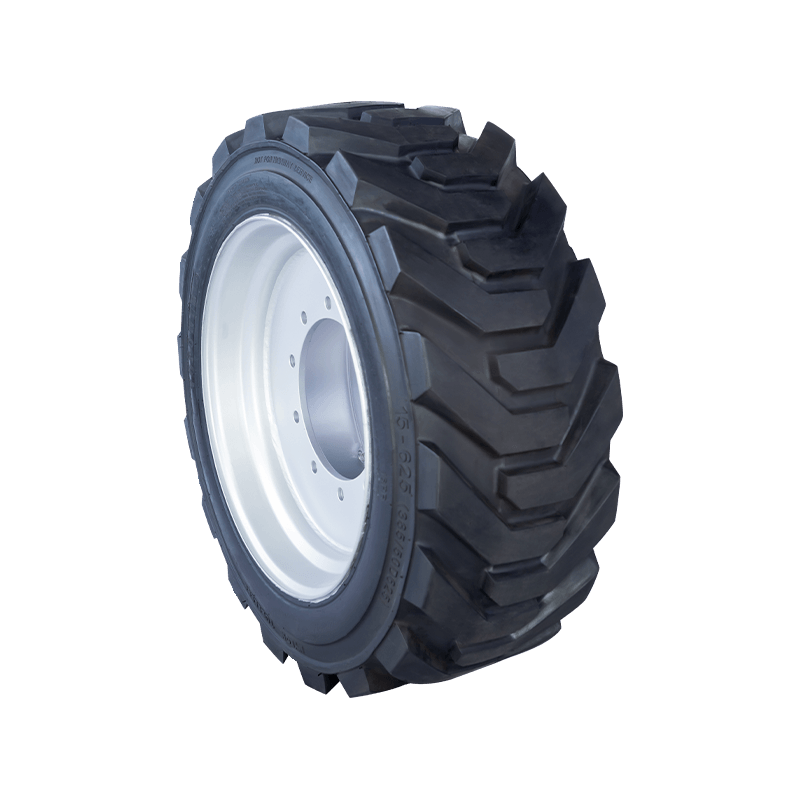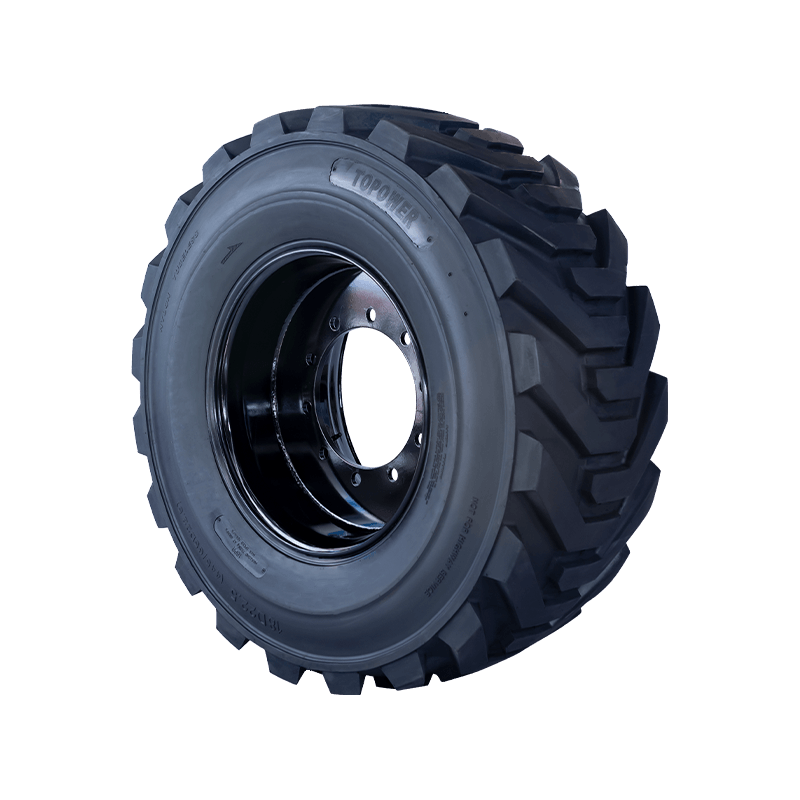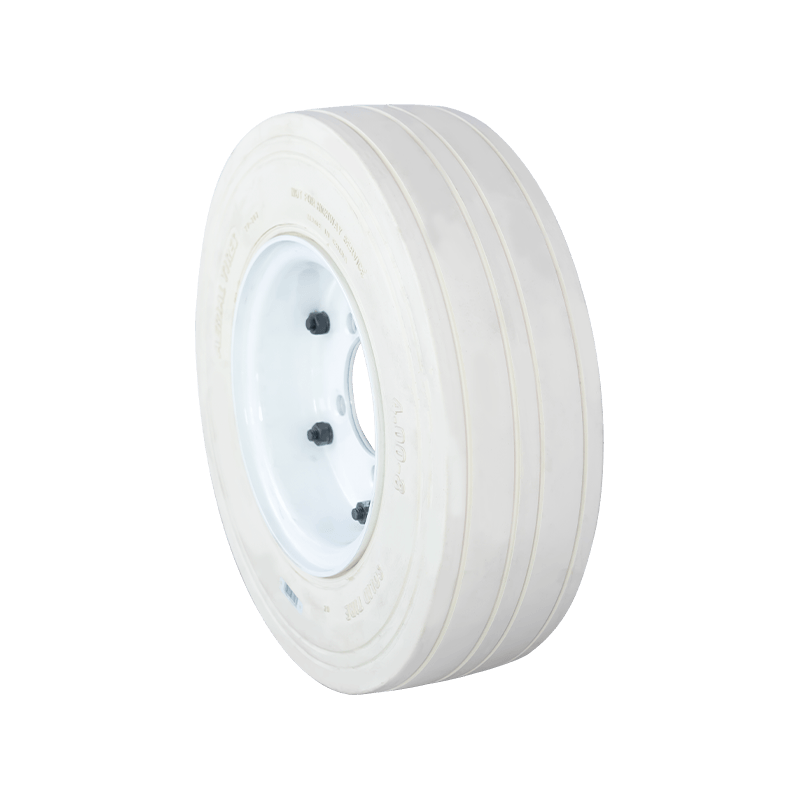1. Material selection: a composite system that combines rigidity and flexibility
The load-bearing capacity of industrial solid tires is based on the precise design of the material formula. Taking the composite application of natural rubber and synthetic rubber as an example, natural rubber can still maintain flexibility in low-temperature environments, ensuring that the tire does not crack in low-temperature warehouses or cold climates; while synthetic rubber (such as styrene-butadiene rubber and butadiene rubber) improves the tear strength and heat resistance of rubber through the optimized arrangement of molecular chains. This composite rubber formula uses a dynamic vulcanization process to form an interpenetrating network structure between the two rubbers at the microscopic level, which not only retains the elasticity of natural rubber, but also gives the tire stronger mechanical properties.
In terms of strengthening metal parts, the steel ring embedded in the tire is made of high-strength alloy steel, and its yield strength can reach more than 800MPa. The surface of the steel ring is galvanized or sprayed with an anti-corrosion coating, and it can still maintain structural stability in harsh industrial environments such as moisture and salt spray. The support limit block is made of engineering plastics such as polyamide (nylon), and forms an integrated structure with the rubber carcass through the injection molding process, which disperses stress while avoiding direct friction between metal parts and rubber, thereby extending the service life of the tire.
2. Structural design: engineering realization of mechanical models
The load-bearing capacity design of tires is essentially a mechanical optimization problem. Taking the multi-layer carcass structure as an example, the number of carcass layers is not simply superimposed, but the stress distribution under different working conditions is simulated by finite element analysis (FEA) to determine the optimal number of layers and angle combination. For example, in forklift tires, the carcass cord is usually a mixed weaving method of steel cord and polyester cord. The steel cord provides axial stiffness, and the polyester cord enhances radial elasticity, so that the tire can resist lateral force and absorb road impact when carrying loads.
The design of the core barrel structure is another key innovation. The traditional solid tire core barrel is a solid cylinder, while the modern design adopts a honeycomb or wavy hollow structure. This design reduces weight while absorbing energy through structural deformation, significantly improving the impact resistance of the tire. For example, when the core barrel of a certain type of industrial solid tire is subjected to vertical load, the honeycomb structure will undergo controllable elastic deformation, dispersing the impact force to the entire tire body, avoiding tire damage caused by local stress concentration.
3. Process optimization: performance control at the micro level
The rubber mixing process directly affects the molecular chain orientation and cross-linking density of the tire. Modern production lines use closed mixers to form a uniform three-dimensional network structure of rubber molecular chains by precisely controlling temperature (140-160°C), shear rate and time. This structure not only ensures the strength of the tire, but also gives it appropriate elastic recovery ability. The vulcanization process uses microwave heating technology to make the internal temperature distribution of the rubber more uniform, shorten the vulcanization time by 30%, and reduce the residual vulcanizer to improve the aging resistance of the tire.
In the molding and pressing process, the shape accuracy of the tire is very important. The mold is processed by high-precision CNC machine tools to ensure that the geometric size deviation of the tire is less than 0.1mm. During the pressing process, multi-stage pressure control technology is used to first fill the mold cavity with high pressure, and then gradually reduce the pressure to maintain pressure to avoid internal bubbles and stress concentration. This process makes the load-bearing capacity of the tire more evenly distributed and extends its service life.
4. Innovative design: technological breakthroughs from concept to implementation
The design of the steel ring support system is the core innovation for improving the load-bearing capacity of industrial solid tires. Taking a certain model of tire as an example, the 6 steel rings embedded inside it adopt a variable cross-section design. The diameter of the middle part is larger to enhance the bending stiffness, and the two ends gradually become thinner to reduce the contact stress with the rubber. The surface of the steel ring is processed with micron-level grooves, and the rubber is embedded in the grooves through the vulcanization process to form a mechanical interlocking structure to prevent the relative sliding of the steel ring and the rubber.
The design of the support limit structure reflects the collaborative innovation of mechanics and materials science. The nylon limit block adopts a trapezoidal cross-section design. When the steel ring deformation exceeds the safety threshold, the contact area between the limit block and the steel ring increases, and the deformation is limited by friction. At the same time, the limit block is filled with thermoplastic elastomer (TPE) to absorb energy during the deformation process and reduce vibration transmission. This design enables the steel ring deformation to be controlled within 2mm under the working conditions of a full load of 3.5 tons and a speed of 20 kilometers per hour, ensuring driving stability.

 English
English русский
русский Español
Español عربى
عربى


